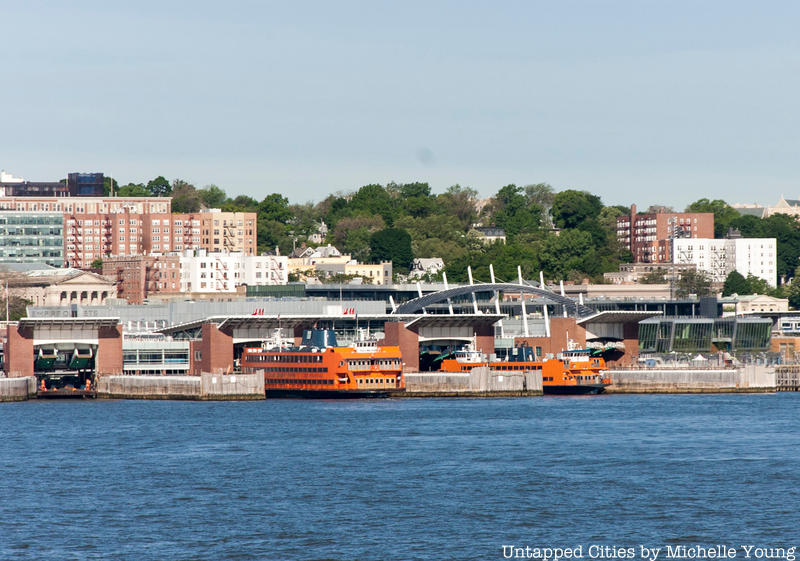2. The St. George Terminal is one of the few rail-boat connections left in the United States

Planning for the St. George Terminal began in the 1870s, when developers were looking to organize the various ferry ports along the waterfront into one centralized dock. St. George was selected as the terminal’s location because it was the shortest distance from the Whitehall Street ferry terminal in Lower Manhattan. The Staten Island Ferry terminal was completed in March 1886, while the train station underneath it opened a year later. The Staten Island Railway line was owned and operated by the Baltimore and Ohio Railroad Company until the MTA decided to create a separate subdivision of the subway system and took control over Staten Island Railway operations.
The terminal underwent some significant changes after the MTA’s construction of the Staten Island Tunnel in the early 1900s, as well as a fire that completely destroyed the terminal in 1946. The tunnel was part of a project that would connect the rail line on Staten Island to the BMT Fourth Avenue Line running just across the Narrows in Brooklyn. Although significant progress was made, construction was discontinued due to a lack of funding. A fire a few years later exposed flaws in the terminal’s layout, leading to a complete $21 million redesign in 1951.





